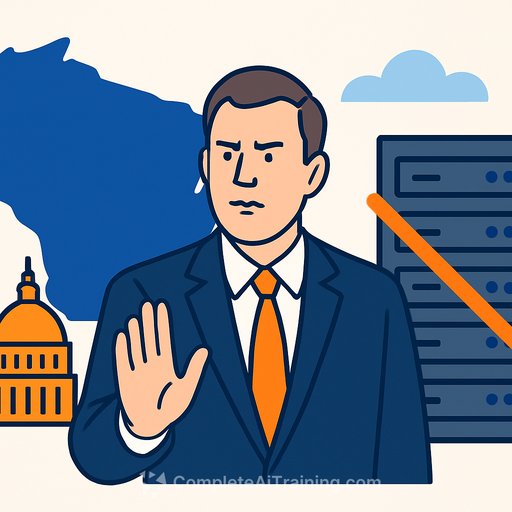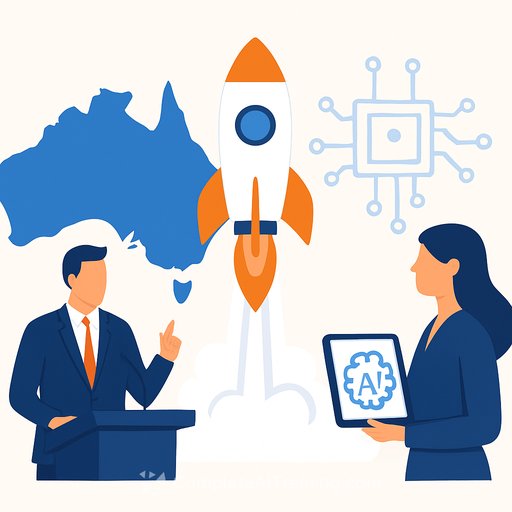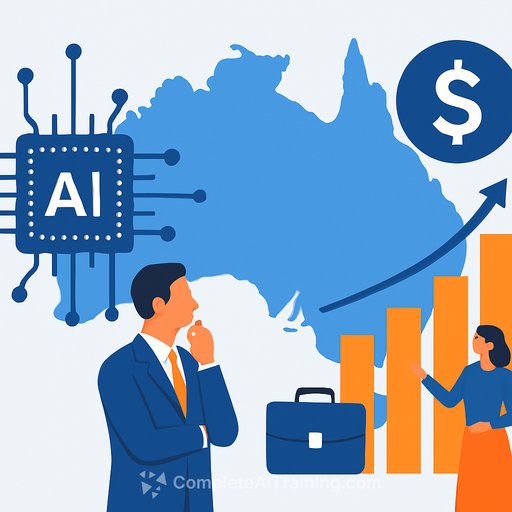Andy Manske's AI-first, small-government pitch: What it could mean for Wisconsin agencies
Andy Manske, a 26-year-old medical service technician, is running for Wisconsin governor on a promise to cut costs and shrink government with artificial intelligence. He will face U.S. Rep. Tom Tiffany and Washington County Executive Josh Schoemann in the August Republican primary. His platform mixes limited-government themes with a few breaks from party orthodoxy.
Manske says affordability is the top priority. He backs eliminating the gas tax and other taxes, offset by what he describes as cutting "bloat" through targeted use of AI.
What he's proposing
- AI-enabled downsizing: Use AI to streamline or replace parts of government operations. At the same time, he wants to ban AI data centers in Wisconsin and limit AI use to government functions.
- Tax changes: End the gas tax and consider other tax cuts, paired with agency reductions driven by automation.
- Policy breaks with GOP norms: Legalize recreational marijuana and build high-speed rail.
- Workforce policy: Explore a four-day work week, citing Iceland's trials.
- Religion and public life: A brief, non-political morning prayer segment across media to "set minds" for the day.
- Campaign funding: Small-dollar donations, with an unusual pledge to try to pay supporters back, win or lose.
- Campaign commitment: He says he will not drop out before the primary.
Direct quotes that define the bid
"I'm proposing… shrinking the government with AI. I don't like AI fundamentally, but… there is some bloat… we can cut out."
On banning data centers while using AI in government: "AI should be used in a limited sense, and… government is… a limited sense."
On experience: "I'm not a politician… maybe a fresh new voice to the issues of today."
Implications for agencies and public employees
Operational audits: Expect scrutiny of processes that can be automated (document processing, benefits eligibility checks, case triage, contact center workflows). Agencies may be asked to surface metrics and cost baselines quickly.
Procurement and risk: If AI is centralized or restricted, procurement could shift toward shared services, standardized vendors, and tighter model governance. NIST's AI Risk Management Framework is a likely reference point for controls and reporting. NIST AI RMF
Data center ban tension: Without in-state data centers, agencies may rely on out-of-state cloud regions. That raises questions about latency, data residency, contract terms, and incident response times. Expect legal review of privacy, CJIS, HIPAA, and records retention obligations.
Workforce planning: Any automation push will need role redesign, retraining, and clear change management. A four-day work week pilot, if pursued, will test scheduling, coverage, and service-level guarantees.
Revenue shifts: Eliminating the gas tax would force a funding rethink for transportation. Agencies may need contingency plans for project pacing and federal match requirements.
Key questions to prepare for now
- Which processes have measurable backlogs or error rates that AI could reduce within 6-12 months?
- What data do we need to clean, label, or redact before any AI deployment?
- What governance model covers model selection, bias testing, audit logs, and public records requests?
- If data centers are banned in-state, what are our contract-ready options for out-of-state cloud with required compliance?
- How do we redeploy staff time saved by automation to frontline service and oversight?
- What pilots (four-day week, AI triage) can we run with clear KPIs and opt-in units?
Who he is and how he frames it
Manske presents himself as an outsider: religious, values-driven, and willing to try unconventional ideas. He says he wants to preserve the Wisconsin he grew up in and bring a "fresh voice" to state leadership. He also emphasizes that his proposed prayer segment would be general and non-political.
Political context and next steps
The Republican primary in August will test whether voters want aggressive cost-cutting via automation alongside policies like marijuana legalization and high-speed rail. Agencies don't set platforms, but they do carry them out. The practical move now is to map feasible pilots, required safeguards, and the true cost of change.
Bottom line
Manske's pitch pairs tax cuts with AI-driven efficiency and a tight scope for how and where AI is used. For public-sector teams, the smart response is simple: define automation candidates, guardrails, and workforce plans ahead of any mandate. That preparation pays off regardless of who wins.
Helpful resource: If your team is assessing AI skills for public service roles, see focused training by role: AI courses by job.
Context on four-day work week trials: Overview of Iceland's pilots and outcomes: Autonomy report.
Your membership also unlocks:





